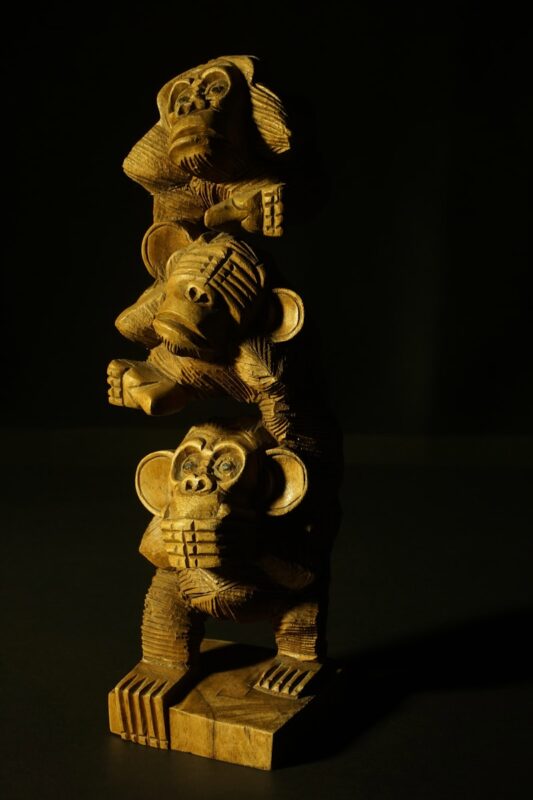Me, Monkey, Mind & Mahatma Gandhi

In the recent years I came across a post which debated on how can one close the ears without first listening and determining it is evil? How can you close your eyes without first seeing and determining it is evil? And the debate went on about how “hear no evil, see no evil, speak no evil” is not possible by simply covering your sensory organs.
In their interpretation, the three monkeys sculpture was gifted to Gandhi by Nichidatsu Fuji from Japan. This monument has been a part of Japan’s history and philosophy from the early times as depicted in the Tosho-Gu Shrine, Nikko.

